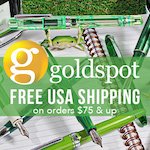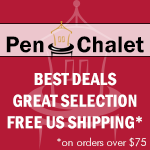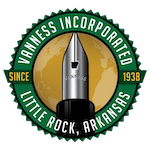There is no getting around the fact that 0.3 mm lead is fragile. It’s my preferred lead width when available, and I accept that it is going to break more often than wider diameter lead. The Zebra DelGuard proposes to fix that issue with a special internal mechanism to prevent breakage, and it works like a champ.
I previously reviewed the 0.5 mm Zebra DelGuard and found the same thing - the mechanism worked as advertised. But I don’t have a breakage problem with 0.5 mm lead to begin with. So yes, the mechanism worked fine in the 0.5 mm, but it wasn’t the best test. 0.3 mm lead, on the other hand, is very fragile and needs the added benefit of what the DelGuard offers.
I haven’t written novel-length notes with the 0.3 mm DelGuard yet, but in the time I have used it, I haven’t broken the lead one time. With my previous favorite 0.3 mm mechanical pencil - the Alvin Draft-Matic - breaking the lead every now and then was the price of admission, and I accepted it. I don’t have to accept that as fact anymore with the DelGuard.
The Pentel Orenz 0.2 mm Mechanical Pencil solved this problem a different way by having an extended pipe where the lead barely poked out, but the look and feel of writing with metal as opposed to graphite didn’t work for me. The DelGuard does it in a more traditional style and functional manner.
As far as negatives go I only have minor design quibbles. Why have a white clip with gold writing when the rest of the pencil has a black and silver style? It’s not egregious and doesn’t keep me from using the pencil, but that’s one of those things I find odd. I’m guessing the clip color is to designate between the 0.3 mm and 0.5 mm sizes. Otherwise, it is a comfortable pencil to write with, and the eraser is actually works. If you like the plastic barrel Uni-ball Kuru Toga then you will like the DelGuard as well.
Innovation in basic writing instruments is a challenge for most companies, so it’s nice to see brands try things like this from time to time. Especially when it solves a problem and works this well.
(JetPens provided this product at no charge to The Pen Addict for review purposes.)




















